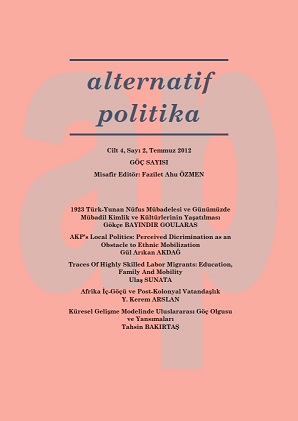Küresel Gelişme Modelinde Uluslararasi Göç Olgusu Ve Yansimalari
International Migration in the Global Development Model and its Reflections
Author(s): Tahsin BakirtaşSubject(s): Supranational / Global Economy, Economic development, Migration Studies, Human Resources in Economy, Globalization
Published by: Rasim Özgür DÖNMEZ
Keywords: International Migration; Global Development; Internationalization; Remittance Flows; Labor Market;
Summary/Abstract: The globalization model, which has influenced the world’s economy since 1980, has brought about an internationalization of goods, capital, and labour markets. In fact, this socalled second globalization wave started in the aftermath of World War II and represents a process of struggling with crisis. The term global development focuses on this process, especially the internationalization of the inward-looking economic structure of periphery countries. In this process, international institutions’ assumption of potential problems as a result of periphery countries’ application of market-oriented policies represents another dimension of global development. The period following the fall of the Berlin Wall, which represents the collapse of the Soviet Union and hence the collapse of one of the legs of the bipolar world, promoted the internationalization of western markets by also covering the Eastern Bloc in terms of commodity trade and financial markets as well as service flows. Following the globalization of all markets beginning in the mid-1990s, the migration and development phenomenon became one of the intensely debated main policy objects throughout the world in general and in the US and the European Union in particular. In parallel with the re-examination of the classical academic point of view, the migration phenomenon has slowly become an academic attraction that simultaneously led to the development of new policy and programs. Although until the early 1990s the discussions on migration and development took place around the North–South axis, in the global development process—particularly after 1990—they evolved around South–North, South–South, and North–North axes. In this study per capita income, trade, population growth, and the main trends in migration in the global development-focused world economy after 1950 (the second wave of globalization) are first analysed to determine how the world changed. Then, the role of international migration in this change is investigated by taking into account both general and labour market trends. Finally, the reflections of the structure arising from globalization centred migration on migrant remittance flows are discussed.
Journal: Alternatif Politika
- Issue Year: 4/2012
- Issue No: 2
- Page Range: 232-261
- Page Count: 30
- Language: Turkish

